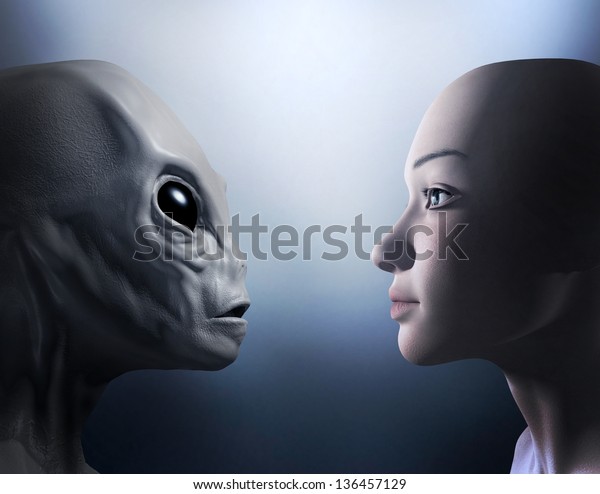Along the way, the science fiction stories I'd been writing since I was 13 began to grow more believable. With my BS in biology and a fascination with genetics, I started to use more science in my fiction.
After reading hard SF for the past 50 years, and writing hard SF successfully for the past 20, I've started to dig deeper into what it takes to create realistic alien life forms. In the following series, I'll be sharing some of what I've learned. I've had some of those stories published, some not...I teach a class to GT young people every summer called ALIEN WORLDS. I've learned a lot preparing for that class for the past 25 years...so...I have the opportunity to share with you what I've learned thus far. Take what you can use, leave the rest. Let me know what YOU'VE learned. Without further ado...
Crystalline life forms…if there were such a thing…which there’s not. Though there is a fringe of Humanity that believes that crystals have mystic powers: https://www.oprahdaily.com/life/health/a26559820/healing-crystals/. Certainly the mirror (which is, of course made of glass, aka crystalline silicon (NOT “silicone”, which is a human-made plastic) in Snow White would be considered sentient.
The question I’d pose here is why would the mirror cares what a bunch of Humans were doing, no matter how ravishingly beautiful they were? Fact is that: the mirror; the crystalline silicon being, would find Human affairs dull and boring.
So, what if crystals WERE a sapient life forms in themselves – or when the right number of them are gathered together, could “come to life”? What if what we see as physical reactions, are instead the reactions of a life form I wouldn’t recognize as a lifeform?
In a book I’m reading, A ZOOLOGIST’S GUIDE TO THE GALAXY (obviously riffing off of HITCHHIKER’S GUIDE TO THE GALAXY), zoologist and author Arik Kershenbaum writes: “The book argues that the evolutionary processes that are observed operating on Earth are universal, and a necessary requirement for the presence of complex life on any planet. As a result, many aspects of animal behavior are likely to be present in the equivalent lifeforms on alien planets. This includes certain features of social behavior, communication, and movement, the evolutionary origin of which on Earth is underpinned by universal processes.”
On the other hand, Carl Zimmer in his recent book, LIFE’S EDGE, writes this near the end: “Instead [of defining life] scientists should be working towards a theory that explains life…‘assembly theory’…calculates the number of steps it takes to build something…a living organism needs far more [than one step to form]: materials made by living things…are exquisitely complex…’ Life is a state of matter that can spontaneously make things with a lot of assembly steps.’”
“One of the originators of this theory of life is a chemist, Lee Cronin, who has devised an ingenious experiment to test the theory…’The idea is that some of the droplets [that form] will spark complex reactions, creating new compounds that can store information – a condition of life. Cronin’s droplets may even, one day, be declared alive. ‘I’m pretty sure we will crack the origin-of-life problem in the next few years,’ he says. ‘But then everyone will go: ‘Oh, that was easy.’”
I’m not sure yet why Kershenbaum believes that biological laws (which even on Earth) are regularly and spectacularly contradicted, must be Universal everywhere else in Physical Reality.
Associate professor Kevin J Mitchell, at Trinity College in Dublin (Ireland) wrote this: “By taking what is essentially an engineering and computational perspective, we can simplify our view of the functional architecture of living systems. For example, we can recognise that some set of components interacting in a certain way acts as a filter, or a switch, or a coincidence detector, and so on. And when we put several of them together just so, we make an oscillator or a homeostatic regulator or an evidence accumulator. This provides a way to go beyond simply describing what is happening to actually understanding what the system is doing.” Zimmer holds that once we can “calculate the number of steps it takes to build something”, we will if nothing else, be at the beginning of understanding life on Earth – and presumably life among the countless exoplanets.
To summarize: one author believes that all life in the universe will be some understandable riff off of the life on Earth (which, while in its wild variety, is UNDERSTANDABLE), and therefore all aliens will be UNDERSTANDABLE (Kerschenbaum); again, that we will be able to UNDERSTAND alien life, no matter where we find it. “We will use the laws of biology just as we would use the laws of physics and chemistry.”
Mitchell from Trinity expects that once we recognize the components that interact in particular ways, we will understand life on Earth and elsewhere.
What I understand my reading thus far, is that there SHOULD be a “theory/theories of biology” that is as succinct to apply as Newton’s Third Law of Motion: Force = mass x acceleration. Yet all three of these writers – all at the cutting edge of their fields – can’t state one of the Laws of Biology with anything even approaching the elegance of Newton’s Third Law, F=ma.
So, there are currently 5040 confirmed exoplanets in some 3876 star systems. A FORBES online magazine article suggests that one third of these confirmed exoplanets may be in their star’s habitable zone. (https://www.forbes.com/sites/jamiecartereurope/2023/05/29/a-third-of-the-most-common-exoplanets-may-host-life-say-scientists/?sh=580cdc972400), so approximately 1,663 of them would be in their star’s HABITABLE ZONE (aka the “Goldilocks Zone” (or, “Goldilocks went upstairs into the bed chamber and first she lay down upon the bed of the great, huge bear, and then she lay down upon the bed of the middle bear and finally she lay down upon the bed of the little, small wee bear, and that was just right.” The Zone would be JUST RIGHT for…Humans…right?)
Dr. Kershenbaum is writing (thus far), he seems certain that life on other worlds will be no more amazing that life on Earth – which is no mean feat, spanning Humans and elephants to Bacillaria and Black Smokers…It almost seems that he’s limiting life to what we both know and understand…
So what does that do to my story?
If life could evolve from regular, everyday single-celled organisms, what’s to stop it from evolving from Bacillaria? It is an organism that is both unique and difficult to explain. Bacillaria paxillifer is a colonial diatom whose members live in colonies and slide along each other, rather like slippery rectangular microscope slides.
The question of WHY they behave this way is essentially unanswerable. The majority of diatoms float freely; though not all of them, and we might as well include my Siphonophoria “alien” based on one of the colonial “jellyfish” recently observed off the coast of Australia. How would a sapient lifeform, descended from paxillifer THINK?
Maybe it would be easier to start with a “single-celled” crystalline organism like the mirror I postulated above? In the movie starring Julia Roberts as the Evil Queen, the crystalline mirror DOES actually have an opinion. It tries to communicate that opinion, which the Queen ignores until the end and the sentient crystal says, “Ready to learn the price for using magic?” and a dark movie actually becomes darker as the crystalline entity exacts its vengeance by allowing the Evil Queen to age to her true age – a wizened and aged crone who can barely walk or talk.
Next time though, I’d like to skip over the philosophy above and look at how I see a crystalline entity behaving – especially looking at how it would perceive the world and wondering how Mirror got trapped into being a simple looking-glass in an ancient kingdom…
Source: https://aliens.fandom.com/wiki/Category:Crystalline_Species
Reference: STAR TREK: TNG – “DataLore”; “Silicon Avatar”; https://blogs.stockton.edu/blogstock/2022/01/20/shhhh-listen-do-you-hear-the-sound-of-crystals/#:~:text=These%20vibrations%20are%20produced%20due,temperature%2C%20light%2C%20or%20vibration.; https://en.wikipedia.org/wiki/Bacillaria ;









































